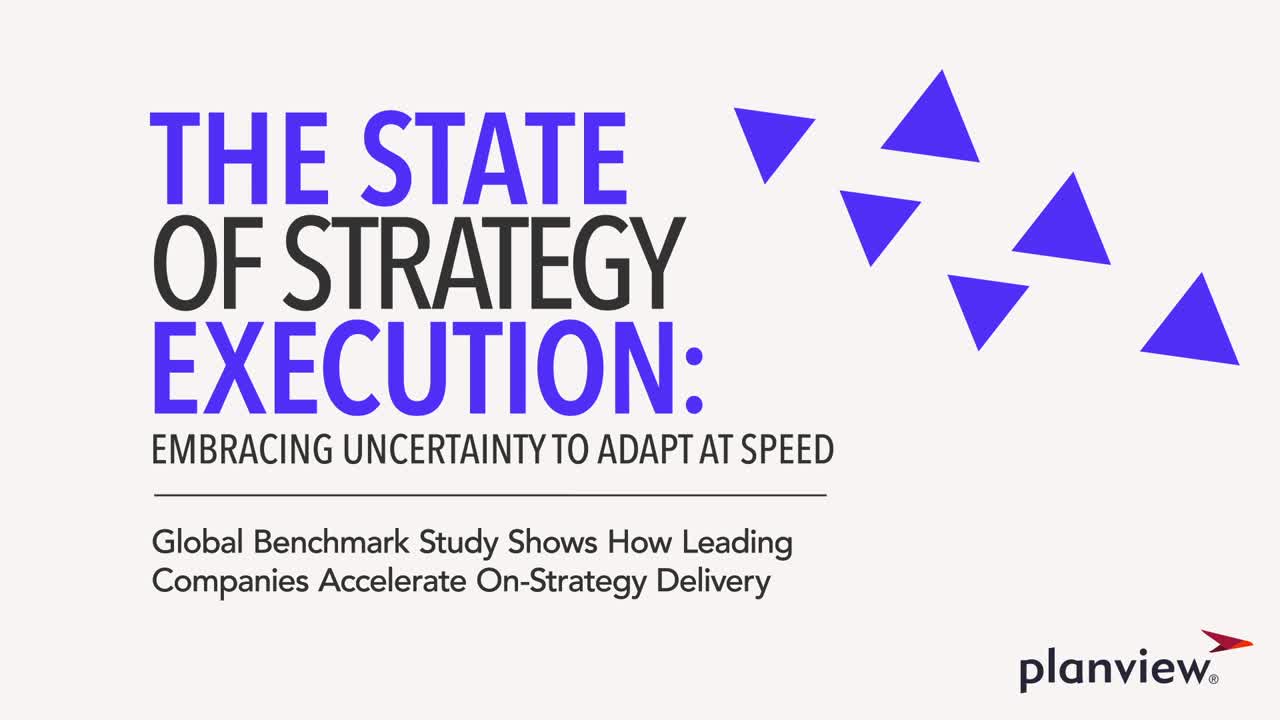
Global benchmark study uncovers how some companies rapidly innovate and thrive under changing conditions, while others simply “get by” without evolving
Adaptability in business is crucial today: Is your company among the elite that can respond effectively to change, at speed? A new global study commissioned by Planview, found a category of “Strategy Execution Leaders” that move faster and produce higher quality outcomes in response to change than their peers. The report, based on a survey of almost 1,000 business and technology professionals, reveals how: “The State of Strategy Execution: Embracing Uncertainty to Adapt at Speed.”
The study’s premise is that change is now the norm, not the exception. Organizations must be able to adapt quickly to new developments and opportunities. Writing about the need for speed post-COVID-19, McKinsey wrote:
“CEOs recognize the need to shift from adrenaline-based speed during COVID-19 to speed by design for the long run.”
To discover how some companies build in this speed by design and consistently achieve greater results while others struggle, the researchers created a “Strategy Execution Index.” This measures adaptability in business by factoring in not just how FAST but also at what QUALITY companies are performing across five components of responding to change:
- Pivoting strategies and plans
- Reallocating funding and budgets
- Reprioritizing work execution and delivery
- Realigning people and teams
- Accessing and analyzing data for decision making
By mastering and connecting these five core processes, companies can move faster and adapt effectively to change. Three categories of organizations emerged:
- Strategy Execution Leaders: The group of respondents that performed the fastest, with the highest quality outcomes
- Strategy Execution Challengers: Respondents that are moving forward but in starts and stops, unable to perform at speed consistently
- Strategy Execution Laggards: This group of respondents were slower to respond to change and struggle to move forward at times

Strategy Execution Leaders Are Winning
According to the results, Strategy Execution Leaders dramatically outperform their slower colleagues in more than just speed. These companies are more likely to exceed financial targets, strategic objectives, and delivery of innovative products and services.
For example, Leaders said they reacted and adapted more quickly to the disruption caused by the pandemic. In addition, they place a higher priority than their peers on cultivating adaptability in business and increasing speed. Not surprising, 62% of Leaders strongly agree that their organization needs to make decisions and execute faster.
What IS surprising is that only 24% of Challengers strongly agree that they need more speed (Laggards: 34%). Could it be that these companies are content with the status quo, running on “adrenaline-based speed” when needed and then going back to business as usual?
Get a sneak peek into some of the report findings by watching the video below:
What’s Holding Everyone Back?
Leaders, Challengers, and Laggards all face multiple barriers to improving their adaptability in business. The top three preventing rapid response to change and disruption are:
- Complex governance or approval processes,
- Unclear or conflicting priorities,
- Lack of resources to complete all approved projects.
Lack of timely, accurate data contributes to these issues and impedes the decision-making required to shift an organization at speed. Critical barriers to having this data are inconsistency in processes, siloed information, lack of ownership for reporting and analytics, and limited technology/reliance on spreadsheets. Technology is a major issue in overcoming these barriers for Leaders, Challengers, and Laggards alike. The report presents some eye-opening findings about the most common tools being used to manage key business processes, yet companies are either force-fitting software or leveraging a hodge-podge of tools in an effort to make it work. It’s as if companies are trying to build a race car using spare parts scattered around the garage.

Best Practices and Recommendations
Strategy Execution Leaders have the right mindset for embracing uncertainty. They are taking action to address their shortcomings and further embed agility into their operations. The benchmark report details four best practices that Leaders use to respond more quickly to change and deliver superior business outcomes.
In addition, the report outlines five recommendations for organizations seeking to develop a speedier approach to adapting strategy execution in times of change. These practices and recommendations provide a roadmap for Challengers and Laggards to follow as they seek to develop adaptability in business.
Read the full report here: The State of Strategy Execution: Embracing Uncertainty to Adapt at Speed.





